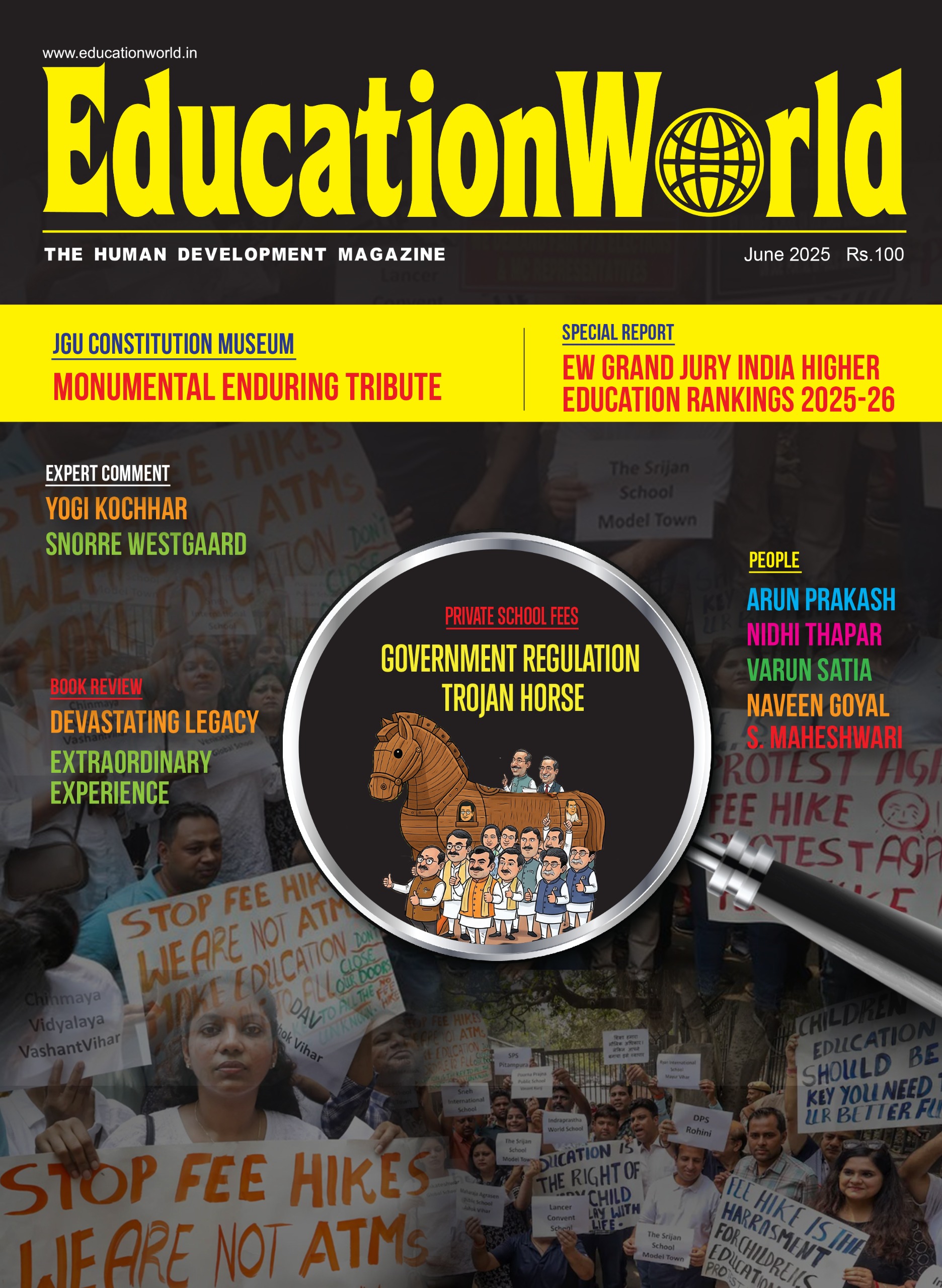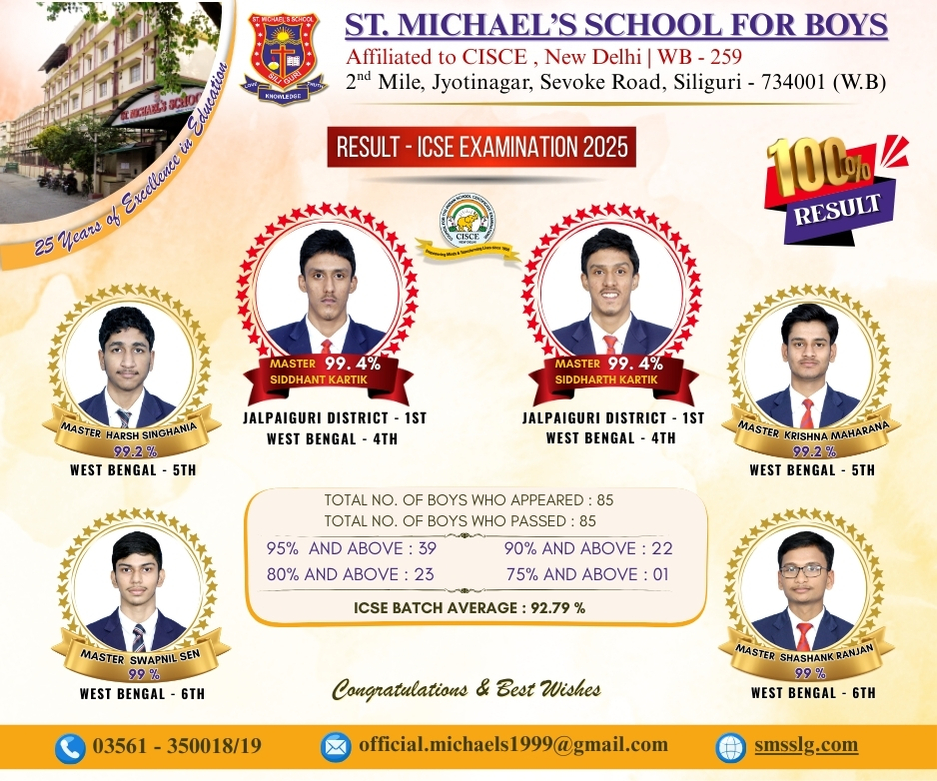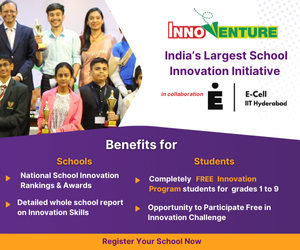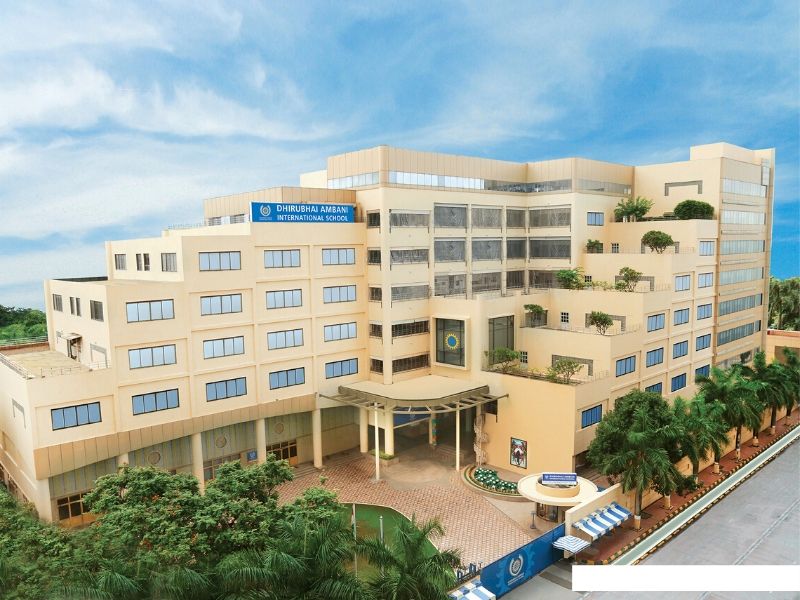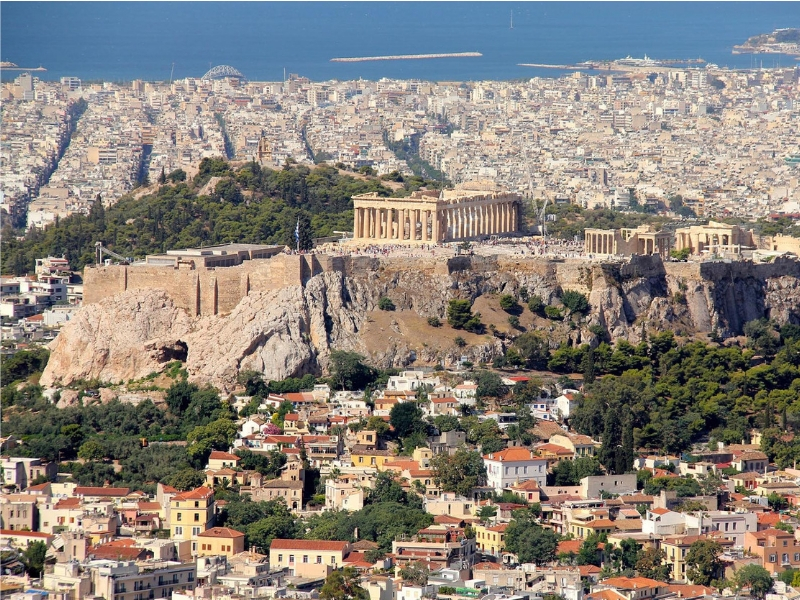Ephemeral celebrations and tributes to mark the platinum jubilee of adoption of the Constitution of India on November 26, 1949, will soon fade from public memory. However the Constitution Museum, a monumental tribute set in bricks-n-mortar, established on the campus of the O.P. Jindal Global University, Sonipat, is likely to endure – Summiya Yasmeen
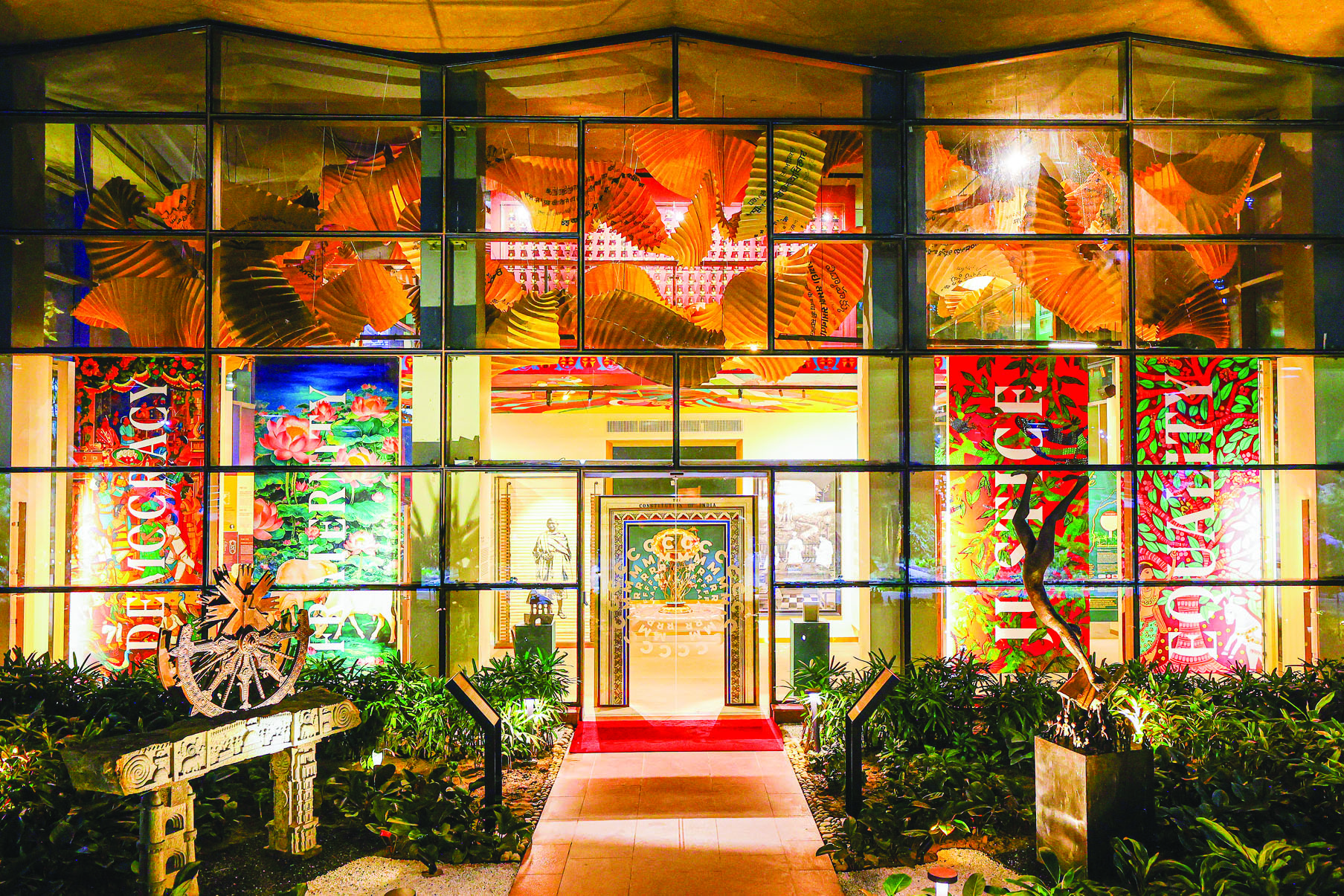
After India wrested its independence from imperial Great Britain in 1947, a specially convened Constituent Assembly expended almost three years discussing, debating and drafting an elaborate new Constitution of India. Comprising 146,385 words, 22 parts and 395 Articles, the Constitution of India, which drew heavily from the British, French and American constitutions, was unprecedented inasmuch as it adopted universal franchise for all adult citizens — without gender, education or property qualifications — ab initio. It was unique also because it conferred the right of equality (Article 14) and iron-clad Fundamental Rights (Part III) upon all citizens.
After extensive and detailed debate the Constitution of India was formally adopted by the Constituent Assembly on November 26, 1949 (Constitution Day) and promulgated on January 26, 1950 (Republic Day). At that time, there was widespread scepticism within the intelligentsia about the Constitution which balances the rights, duties and is the governance charter of an unprecedentedly heterogeneous population, and the new Republic of India surviving as a constitutional democracy governed by rule of law. Moreover there was widespread scepticism among foreign constitutional experts, predicting balkanisation of India and/or descent of the Republic into army rule. However, except for a brief interregnum of 19 months during the Emergency (1975-77), the Constitution of India has stood the test of time and although it has been amended 106 times, it has retained its basic structure and remained true to the mandate of the Constituent Assembly.
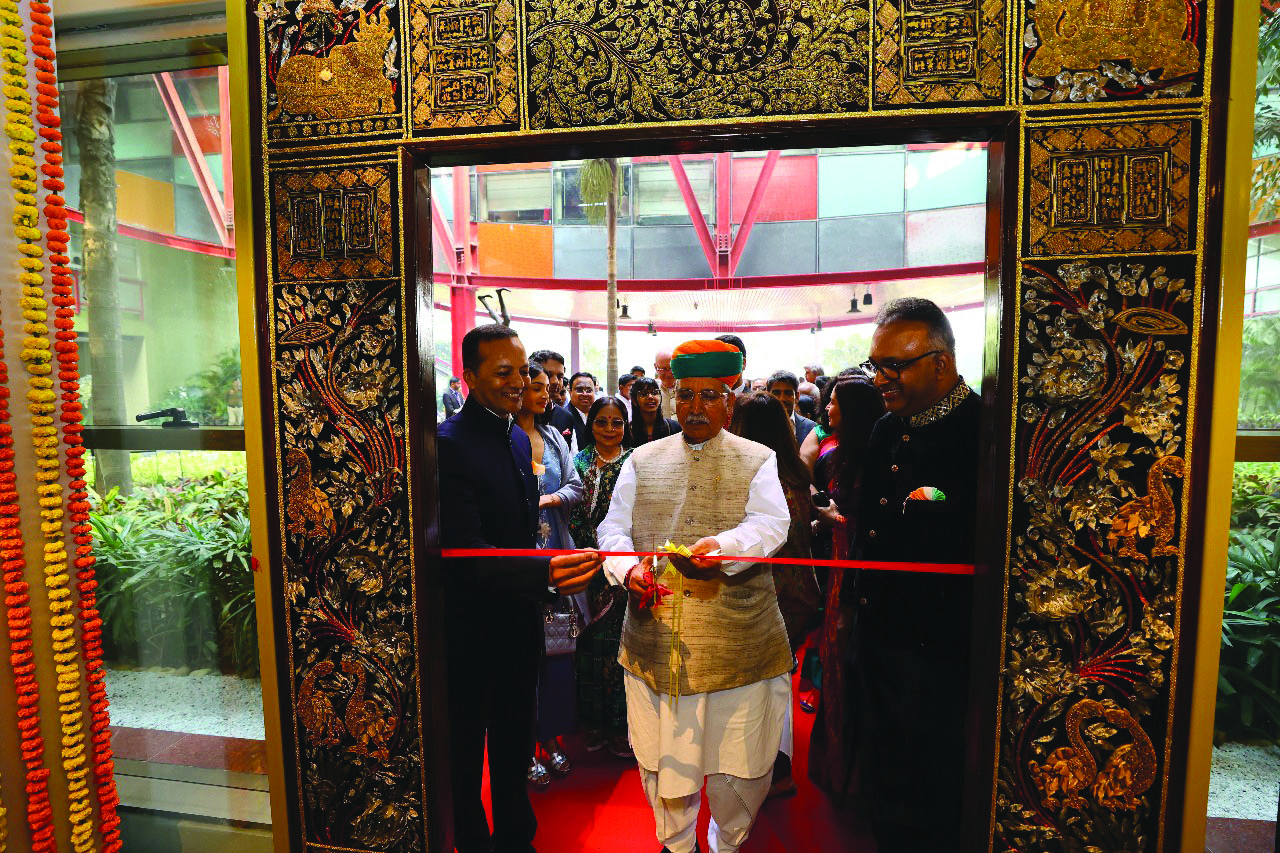
L-R: Naveen Jindal, Arjun Ram Meghwal (Union minister for justice) & Dr. Raj Kumar inaugurate Constitution Museum
Therefore on November 26, last year, the Platinum Jubilee (75 years) of the Constitution Day was commemorated countrywide with great aplomb. This momentous anniversary was celebrated by a specially convened joint session of Parliament addressed by President Droupadi Murmu; a special address by Prime Minister Narendra Modi in the auditorium of the Supreme Court; launch of constitution75.com, an interactive website by the Central government, and mass recitation under which school/college students and citizens participated in a nationwide synchronised reading of the evocative Preamble of the Constitution.
Yet, these celebrations and tributes to mark the Platinum Jubilee of adoption of the Constitution by the Constituent Assembly and the people will soon fade from public memory. On the other hand, the Constitution Museum & the Rights and Freedoms Academy — a monumental tribute set in bricks-n-mortar, embellished by steel and glass, inaugurated on the campus of the O.P. Jindal Global University (JGU) in Sonipat, Delhi NCR (which also hosts the country’s largest and most respected law school) — is certain to endure.
This imaginative initiative recounts the history of the Constitution; debates that shaped its provisions; landmark judgements of the Supreme Court that interprets it; fundamental and other rights that the Constitution confers upon the citizenry. Designed by celebrated French architect Stephane Paumier and spread over three floors, the museum showcases a photolithographic copy of the Constitution (one of 1,000 printed) as the centrepiece, a mix of memorabilia, archival documents, art and sculptures, and AI-driven audio-visual displays that capture the “grandeur and glory of the world’s longest written Constitution”.
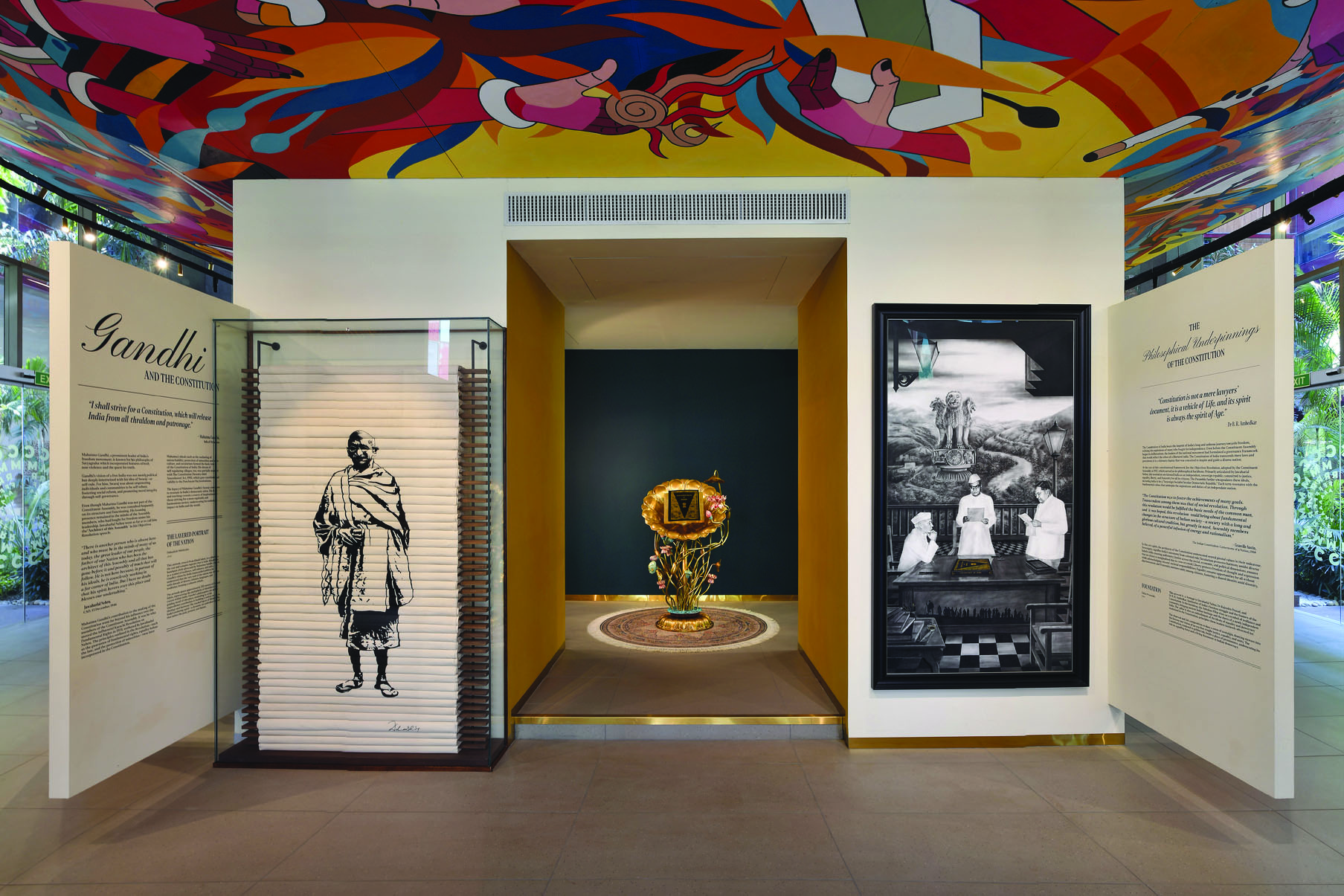
Centrepiece photolithographic copy of the Constitution of India
Dr. C. Raj Kumar, a polymath alum of Madras, Delhi, Oxford and Harvard universities and Founding Vice Chancellor of JGU, says that the country’s first Constitution Museum has been established to attain several objectives. “First, to pay tribute and contribute to the Constitution as a living, breathing and growing document. Second, to advance the ideas of civic consciousness and education, and to connect our past, present and future. Third, to pay tribute and celebrate the framers of the Constitution. Fourth, to ensure that there is democratic access to the Constitution. Fifth, to encourage conversations about democracy, the republic, rights and freedoms. In this museum, the history of our rights and freedoms comes alive, celebrating the unifying force of the Constitution of India, and its legacy of upholding justice, liberty, equality and fraternity of the people of India,” says Raj Kumar in a ringing tribute to free India’s governance charter.
After persuading steel tycoon Naveen Jindal to endow the university with an initial Rs.500 crore in 2008, Raj Kumar supervised the design, construction and operationalisation of JGU in a record 310 days. He has applied the same “irresistible force” to complete the Constitution Museum, established with a capex of Rs.30 crore in 171 days.
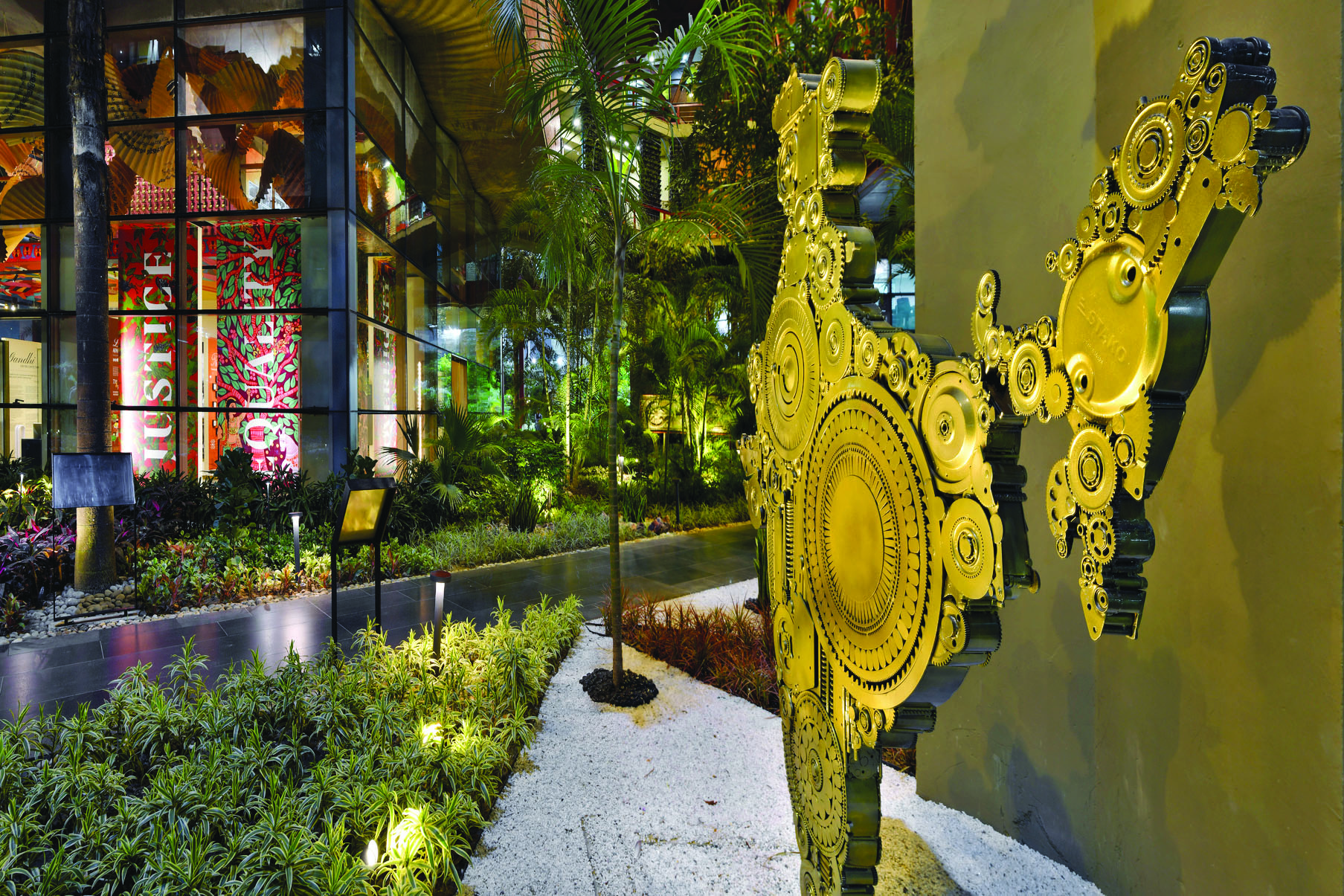
Constitution gardens snapshot
To design the museum, a 32-member committee of constitutional experts including Justice U.U. Lalit, Dr. Abhishek Singhvi and Prof. Upendra Baxi were consulted, and a committee of 104 museum advisory members was constituted. Anjchita B. Nair, Professor of Practice at the Centre for Culture, Heritage and Museum Studies at JGU, and co-founder of Cultre, a Delhi-based heritage, culture and museums consultancy firm, was appointed curator of the museum.
Working round the clock, they completed construction of the three-storied museum with its several thematic galleries, 11 interactive installations, nine outdoor sculptures and 19 artworks by contemporary artists, 45 digital displays and 115 minutes of audio-visual footage including Constituent Assembly debates, within 171 days.
Among the notable features of the JGU Constitution Museum & the Rights and Freedoms Academy are:
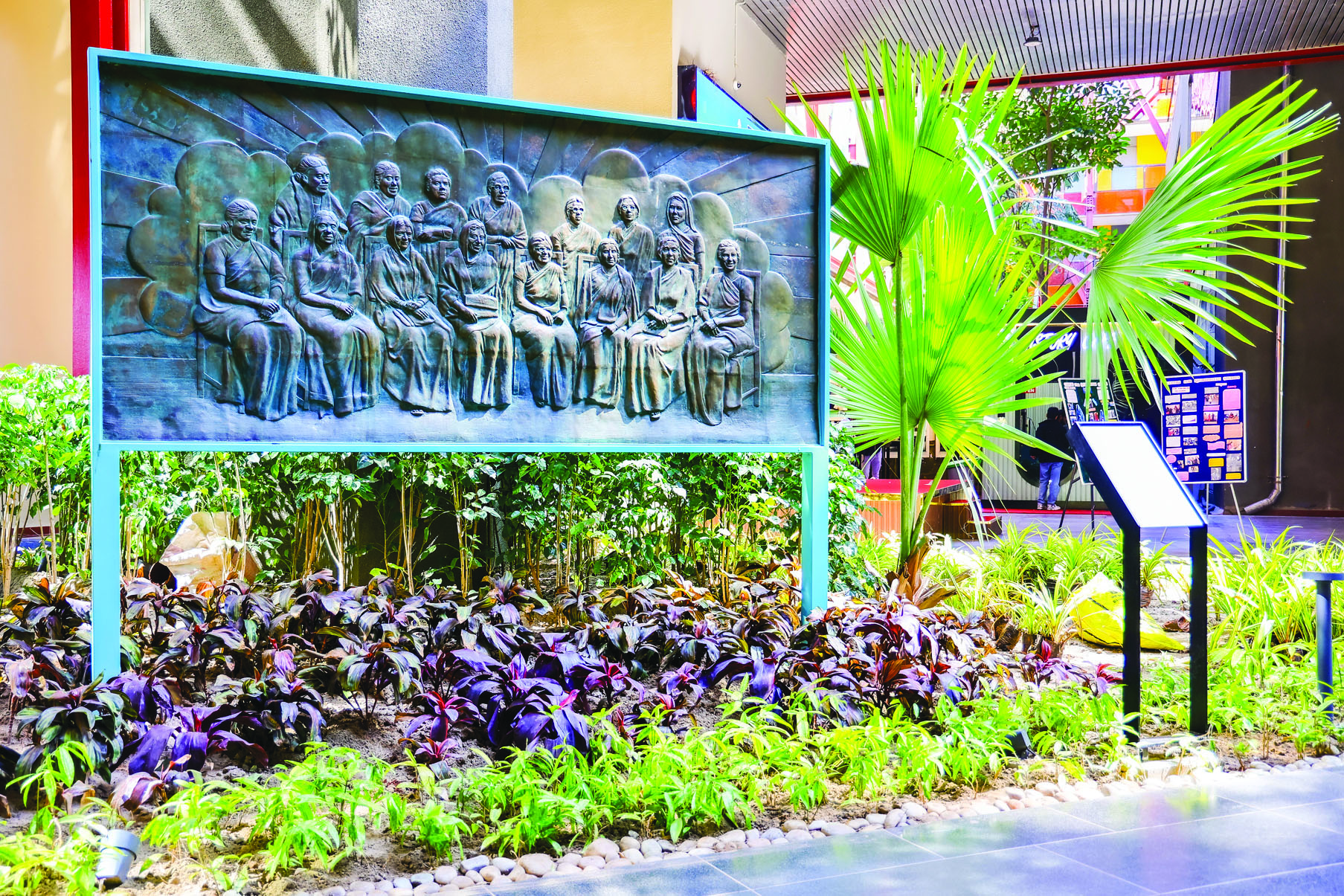
Constituent Assembly women members mural
Constitution gardens. The garden surrounding the museum is seeded with 40 plant species and shrubs from across India and interspersed with nine evocative sculptures of renowned sculptors including Nishant S. Kumbhatil, Deval Verma and Rajesh P.S. Also a mural by Gautam Rahul which showcases all 15 women members of the Constituent Assembly, whose contribution towards framing the Constitution has been overlooked.
Thematic galleries. The museum houses several thematic galleries spread over three floors. Among them: The Constitution: A Kaleidoscope. This gallery houses a photolithographic copy of the Constitution bearing signatures of prominent members of the Constituent Assembly. Decoding the Constitution features digitalised interactive installations. The Makers Gallery displays metallic busts of all 299 members of the Constituent Assembly who drafted the Constitution.
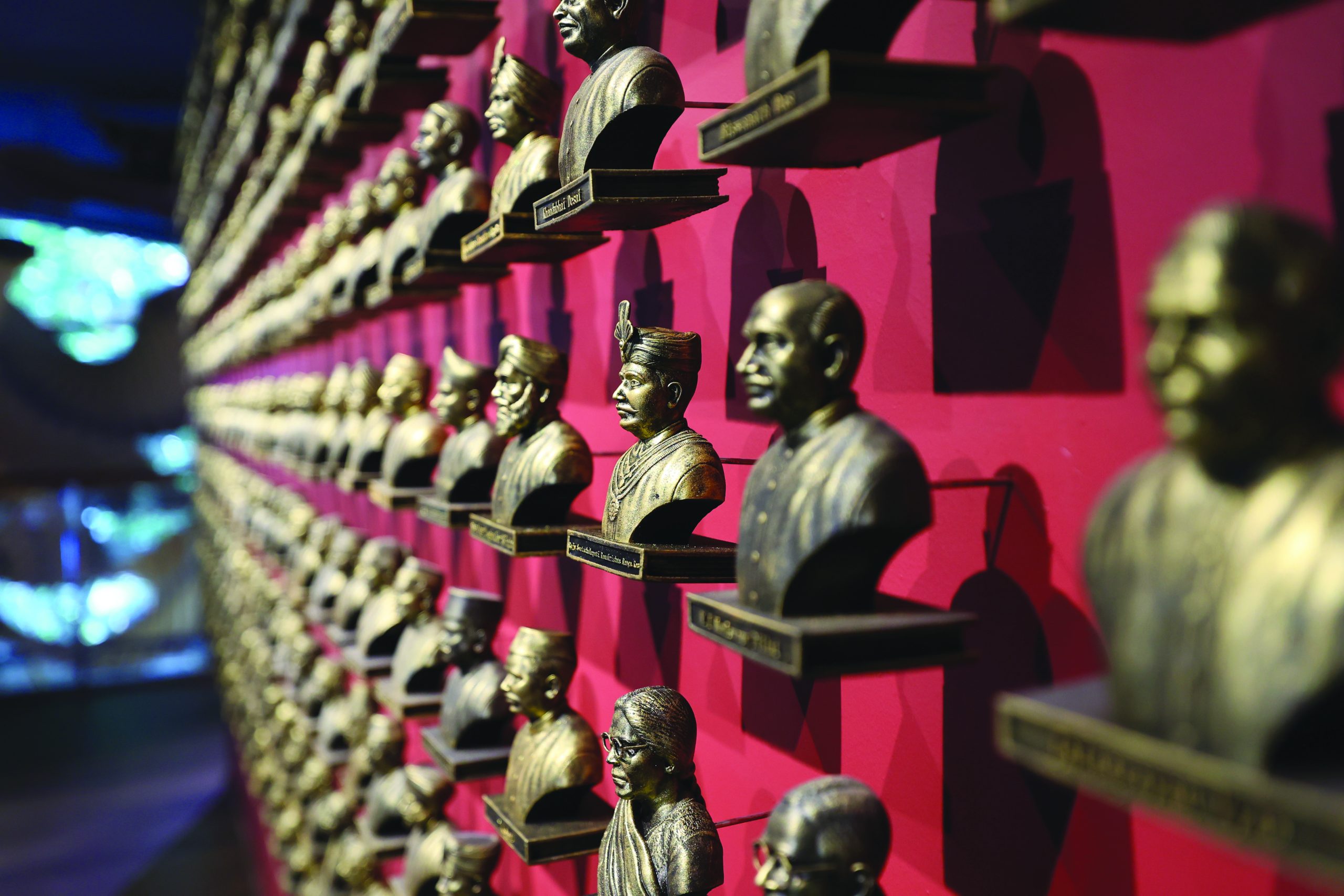
The Makers Gallery: metallic busts display of Constituent Assembly members
Moreover, an audio-visual installation of Dr. B.R. Ambedkar, Chairman of the Drafting Committee of the Constituent Assembly, enables visitors to experience his speeches first-hand through a set of questions posed to his hologram. Other features of this digitally enriched museum (which requires a full-day visit to do it justice) are a Children’s Corner, Know your Constitution, a 75-year journey of the Constitution and a 22-seat Samvidhaan Theatre for viewing audio-visual reels of debates of the Constituent Assembly and archival material.
Since its inauguration last November, JGU’s Constitution Museum has attracted numerous distinguished visitors, including seven Supreme Court judges, two former Chief Justices of India, and several senior apex court counsel and scholars who have lavished praise on this unprecedented initiative.
“It’s an amazing museum. Every display has been given a great deal of thought and attention, and what’s more it’s so incredibly informative and educative… It deserves to be a pilgrimage centre for everyone interested in the Constitution which should mean all of us — every citizen of India,” says Shashi Tharoor, renowned Congress MP and author, in a video byte after visiting the museum.
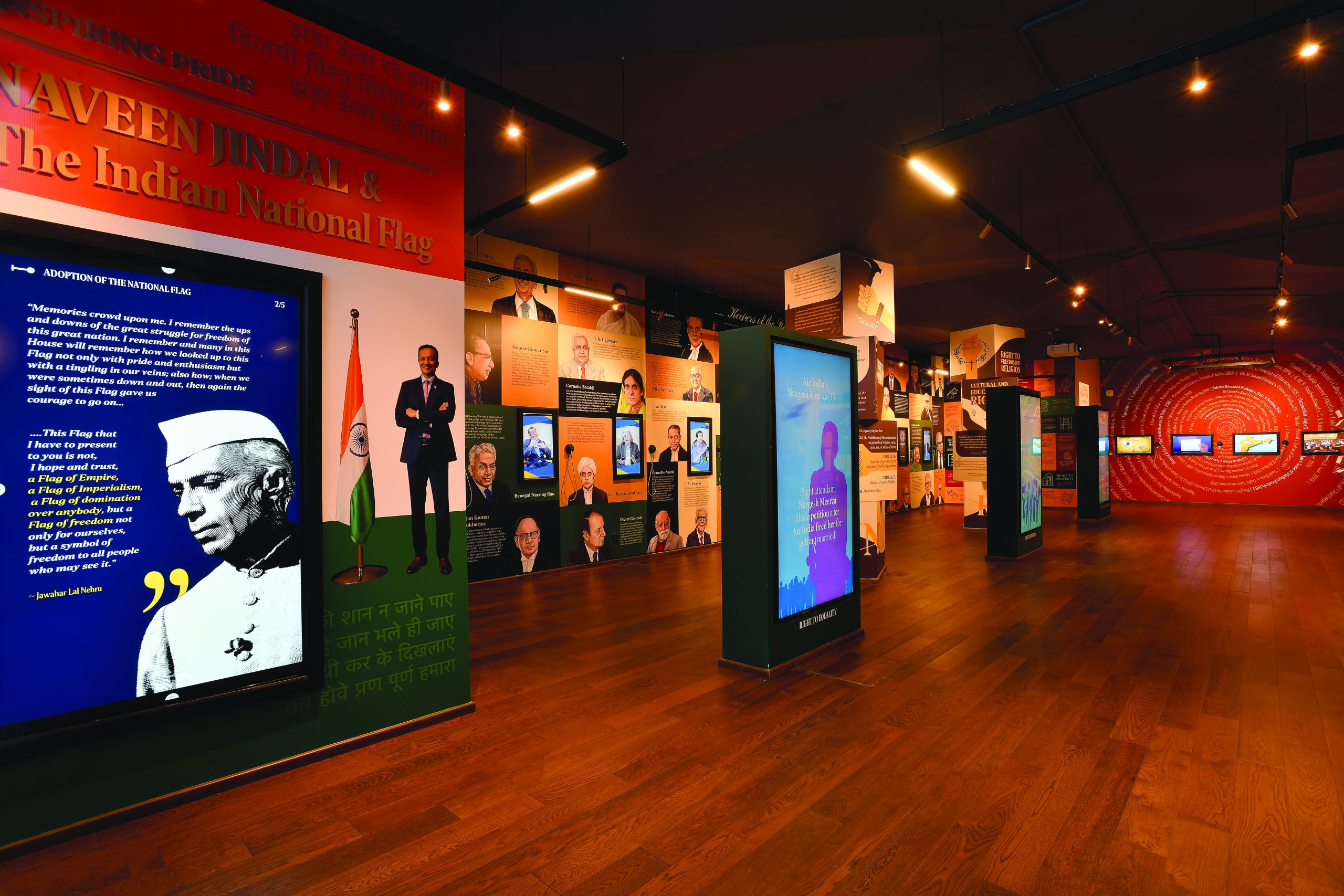
Gallery with audio-visual installations
The Constitution Museum is open to the public. Batches of school and college students are particularly welcome by appointment.
“The Constitution of India, drafted by the farsighted Constituent Assembly visionaries, is the collective conscious of the people of India. As stakeholders who are guaranteed rights and freedoms, all citizens should know the history of our Constitution, its evolution, its provisions, amendments and their interpretation by the judiciary. The Constitution Museum was established to educate and empower all Indians — from all walks of life and all ages — on the constitutional legacy behind their identities as citizens of India. The museum is built as a microcosmic site that brings together the intellectual, scholarly, artistic, historic, digital, journalistic, and aesthetic imagination of the Constitution, and will invest visitors with hope, inspiration, and reflection,” says Dr. Raj Kumar.
With Dilip Thakore
Also Read: Bhau Daji Lad Museum free online science session for students














